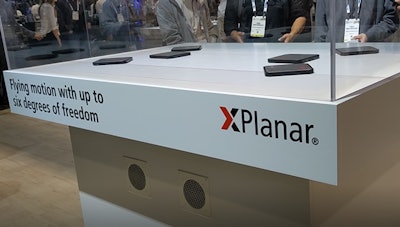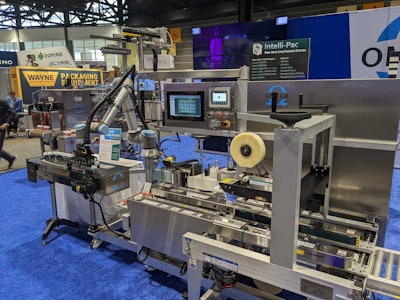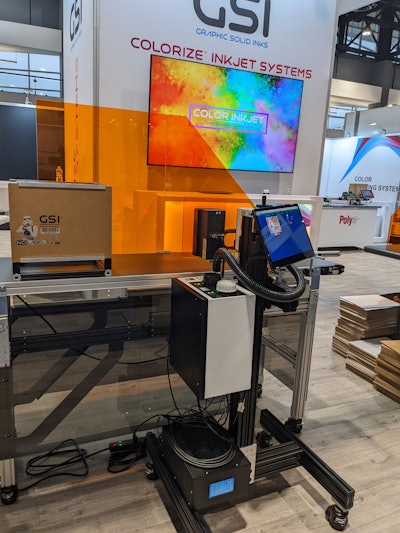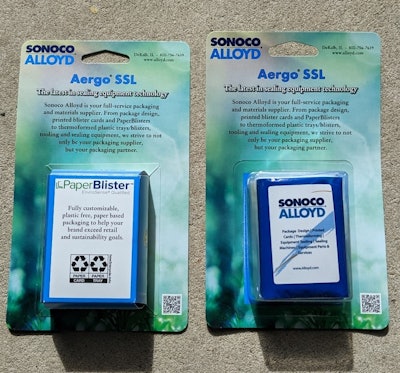October 2022’s PACK EXPO International in Chicago was the first major PMMI tradeshow that I’ve visited since the COVID-19 pandemic. It had been awhile since I last visited the show floor. This was especially interesting considering the difficulty of finding factories, the shortage in technical personnel, and the rising labor costs. After walking for miles on the show floor, making many observations and asking more questions, it became clear that the show’s focus could be broken down into three main themes: sustainability in packaging, automation, or the digitization of the world.
The majority of sustainability talks and exhibits at the show focused on food and high-volume consumer goods. While sustainability has been a big theme for cosmetics and beauty brands, that topic is too large for this article. Hence, I will focus on automation and equipment, including the extensive use of the digitalization of “everything” and the extensive use of the Internet to communicate and resolve equipment issues.
Smart automation using linear motor track systems
Numerous generic automation suppliers have introduced smarter, more integrated solutions for automation and digitalized processes in machine and plant operations.
My personal impression is that three companies lead the way: Beckhoff, ABB’s B&R, and Schneider Electric.
The keys to smart automation, as it replaces hard automation, are the linear motor tracks moving magnetic carriers—sometimes referred to as shuttles—in combination with robots, cobots, and integrated control systems. These smart packaging holders transport workpieces at high precision through a machine and without being restricted to a fixed timing (on request). By now, many automation houses—like Schubert, Syntegon Technology, Groninger, PKB, and Weckerle, to name a few—have incorporated systems like the eXtended Transport System (XTS) from Beckhoff, or the ACOPOStrak and SuperTrak from B&R, into their reseptive cosmetic and beauty care lines. There are numerous benefits to such systems. They can achieve higher operating speeds and precision braking, acceleration, and each product’s movement is independently controlled. This eliminates the need to have buffer zones. These benefits are crucial in maintaining the best product aesthetics. They also reduce rough handling and contact between components of packaging. Because of their modular design, existing and new systems can be scaled and rearranged easily, minimizing the need for additional investment.  Beckhoff showed off the incredible movement of the carriers on an XPlanar Table.
Beckhoff showed off the incredible movement of the carriers on an XPlanar Table.
The newest innovations I saw at the show were the systems that makes use of levitating 2D product transport, with up to six degrees of freedom, called XPlanar system from Beckhoff, or ACOPOS 6D from B&R. This technology works on the principle magnetic levitation. Shuttles equipped with permanent magnets glide over the electromagnetic motor segments. They can freely move in two-dimensional space and rotate, tilt, and control the height of levitation. This gives them six degrees total motion control freedom. Dirt from mechanical abrasion (such as on conveyor belts, chains and other moving parts) is virtually eliminated. This eliminates soiling and contamination from sensitive products and lowers cleaning expenses.
I can’t wait to see the next compact assembly line made with this new levitating transport technology.
Cobots can replace manual labor
PACK EXPO International was a great example of the trend to replace manual labor with cobots. To refresh the reader’s memory, the term cobot refers to Collaborative Robots: robotic arms that have pressure-sensitive sensors enabling them to work alongside people, while removing the need for expensive industrial guards and safety scanners. These cobots, due to their “manipulative” motions mimicking humans, are now automating the tasks of box/ case forming, case packing and palletizing—if high speed is not required.
Flexline Automation demonstrated an integration of the BoxEZ manual box, which was formerly owned by Universal Robots. Flexline Automation also displayed a second cell that had an additional cobot for automating the assembly and insertion of primary products into the box.
Omega Design Corporation presented its Cobot Pack Assist system for the Intelli-Pac unit. It loads multiple containers into a box. This system allows you to track and trace your case packaging, labeling and inspection. Omega claims that the cobot improves efficiency and reduces human error. It also frees the operator from hand motion to allow them to focus on quality product packaging, labeling, and inspection.  Omega Design Corporation displayed its Cobot Pack Assist unit for Intelli-Pac, which loads multiple containers into one box.
Omega Design Corporation displayed its Cobot Pack Assist unit for Intelli-Pac, which loads multiple containers into one box.
Brooks Automation presented its SCARA-type PreciseFlex Collaborative Robots with a simple set-up. These SCARA cobots have many advantages, including their simplicity and the ability to reach both vertical and horizontally.
Printing is the focus of late-stage customization
A key to successful late-stage-customization is quality, on-demand printing directly on secondary and tertiary packaging. This provides a cost-saving capability, eliminating the need to label or preprint boxes. It also supports sustainability and minimizes disruptions in supply chains for both manufacturers and fulfillment centers. This allows you to personalize the printing for each consumer as a marketing tool. For example, wouldn’t you like to get a box with colorful picture of the products inside, or what other products may go well together with what is being shipped? The GSI ColorizeInkjet System was introduced at PACK EXPO Las Vegas in January and impressed David Hoenig, cosmetics packaging expert.
The GSI ColorizeInkjet System was introduced at PACK EXPO Las Vegas in January and impressed David Hoenig, cosmetics packaging expert.
Inkjet technology is rapidly evolving. There are many inks available, ranging from non-hazardous vegetable oil to UV-cured inks. They can be applied to a variety of substrates using continuous inkjet printing (CIJ), or drop-on-demand(DOD). Both systems use piezoelectric technology to control ink flow. All suppliers continue to upgrade their products in order to increase their reliability, maintainability and readability. Suppliers are now integrating scanning and scanning programs to ensure the code is correct. Optionally, suppliers may include Industry 4.0 elements, which is now also Industry 5.0. This includes connectivity to factory ERP systems and other equipment. The cloud can be used to connect to the supplier of the printer for continuous equipment monitoring. Interacting with Track and trace software is another feature becoming popular, especially for the pharma industry, but could be used for high value cosmetics and skin care products to detect and monitor “diversion”. A further development is the increase in printing envelopes due to the use of large and high resolution printing heads.
Domino, for example, introduced the all-new Domino Cx350i DOD case-coding system. The company claims that the DOD has a high resolution integration and no maintenance features. It also boasts an intuitive control system.
Graphic Solid Inks’ (GSI) PACK EXPO International Chicago debut was made with its multi-color Colorize Inkjet Systems. This system features CMYK+White CIJ, with UV cured Inks. GSI combined NoLabel Printing heads with Colorize Printing heads. High-resolution printing with bar codes on kraft cardboard. Although this technology was covered previously by PW, I could see it having an impact on cosmetics or beauty care.
Diagraph’s DOD ResMark 5000 compact heads with high resolution and no ink hoses was introduced. It features integrated control for eight heads, patented quick disengage printer modules, and localized wireless connectivity. The compamy boasts the industry’s longest ink throw distance of 0.5 inches.
Inkjet coding is not the only market that has improved, but the laser coding industry has been a major player in the past few years. You can choose from different UV wave lengths, or powerful CO.2 So, there are more options. The capabilities of the etching envelope are also increasing.
Videojet, for example, exhibited 60-Watt CO2 Laser Marking System has an etching envelope of nearly 4 ft and a life expectancy of 45,000 hours. This can help you save a lot ink.
A key aspect of late-stage customization is being able to handle (and code or print) primary packages, rather than needing them preprinted. This is a great option for promotional customization or short runs, which are both common in cosmetics. It is important to be able to work with a variety of formats using the same equipment.
HSAUSA introduced VFS-1000 Vertical Food Supply System. It uses a new method of magazineling and delivering folded cartons, bags, or pouches to a conveyor. Standing-up pouches and cartons are placed on the edge and then picked up and placed on a shuttle table. The conveyor is then moved on to the downstream conveyor for printing or labeling. The equipment can be stopped for replenishment, even though it is a batch process. The VFS-1000 belongs to a group of modules that can all be connected together to automate handling, printing (or labeling), inspecting or rejecting and stacking up the finished parts.  Sonoco Alloyd has been touting their EnviroSense PaperBlister package as a way to contribute to a brand’s sustainability profile.
Sonoco Alloyd has been touting their EnviroSense PaperBlister package as a way to contribute to a brand’s sustainability profile.
A common retail cosmetics vector for late-stage-customization Packaging in blisters Sonoco Alloyd launched the Aergo line, a blister sealing packaging machine. Aergo features heat, fuse, and radio frequency sealing technology. It uses servo motions instead of mechical which enhances denesting abilities and can be scaled with additional options. Aergo SSL 11 station, a servo-driven machine that handled plastic blister and EnviroSense PaperBliste at the show, featured Alloyd quick–change heat sealing tooling. Sonoco Alloyd has been touting their EnviroSense PaperBlister package as a way to contribute to a brand’s sustainability profile.
Many cosmetics and beauty products containers are imported from abroad. Some manufacturers prefer to have the container pre-capped before they fill it. This ensures that the container remains clean throughout the entire process. The container is sealed so that no dirt or dust can get inside. This filling equipment is required to remove the caps from the bottles. Next, use a shuttle device to fill the open containers. Finally, re-cap the/re-torque them. Although this can be a problem for fillers, it has one major operational and one qualitative advantage. It is unnecessary Caps are not designed to be used with unsramblig equipment, or require complicated setup for changeovers.
PKB started offering this un-capping and filling, to recapping feature. A high-speed filler performed the un-capping, and re-capping. I was able to see this at the PKB booth.
Many suppliers claimed remote access to equipment troubleshooting. This was possible through the internet and often using smart phones as a communication and access tool.
NITA displayed a variety of its SENTIANT labels. The booth’s focus was on uptime, seamless remote monitoring and access to maintenance via the internet or cloud. NITA claims their labelers are easy to maintain because they use 100% non-proprietary electronics, software, and all synchronized (no PLCs) servos.You can get live tech support over the internet. Self-Diagnosing software allows you to order parts and includes preventative maintenance.
Innovations in equipment for tubes on the cosmetics market
Tubes are a popular packaging format for the cosmetics, body and hair care industries. They come in many sizes and can be decorated with artwork. How can you improve manufacturing efficiency? One answer is simple and quick changeovers.
Citus-Kalix is part of the COESIA Group and has introduced its latest high-speed single-filling nozzle, KX1103EVO tube filler for metal and plastic. It can produce 110 tubes per minute. The manufacturer calls the machine “the next generation,” primarily due to the quick changeover. This claim can be made in 10 minutes [of changeover time] Start a new production run. The equipment facilitates fast changeovers with automatic servodriven adjustments wherever possible, format setup data registered in recipe and dedicated change pieces that can easily be swapped (no adjustments required and preferably, no tools).
The majority of tubes used in cosmetics and beauty products have come from China. New tube labeling equipment was needed due to problems in the supply chain caused by COVID-19 from China. Pendergraph Machines launched its tube pre-labeler TL-60 which was integrated into to a.
Cosmetics conveyers are also in development
Although some equipment trends were more towards magnetic or linear servo movers/shuttles at the show, conveyors remain a core component of most packaging lines. Modern conveyor systems cannot handle multiple products and can do so without jamming or slow changeovers.
So conveyors won’t disappear. We still have to unmuck components. Safe handling cosmetic products is possible with gentle unscrambling and careful transporting. Cosmetics have a high aesthetic value.
Manufacturers of horizontal motion conveying systems grapple with how to minimize vertical “rubbing” movement and constant vibration between parts being transported in linear transport chutes. Numerous manufacturers showed a new concept in oscillating chutes, which did not cause vertical vibration. A profiled movement back and forth (cam-driven linear motion) “pulls the rug”  A number of manufacturers showed a new concept in oscillating chutes that didn’t create vertical vibration. A profiled movement back and forth (cam-driven linear motion) “pulls the rug” You can see the components that are unable to move forward because of the inertia imposed by the forward motion.
A number of manufacturers showed a new concept in oscillating chutes that didn’t create vertical vibration. A profiled movement back and forth (cam-driven linear motion) “pulls the rug” You can see the components that are unable to move forward because of the inertia imposed by the forward motion.
In general, I was delighted to see so many advances at PACK EXPO International. After a long hiatus, these are just some of the highlights one traveler was able to discover. It can’t help but make you wonder what we’ll see next year in Las Vegas.